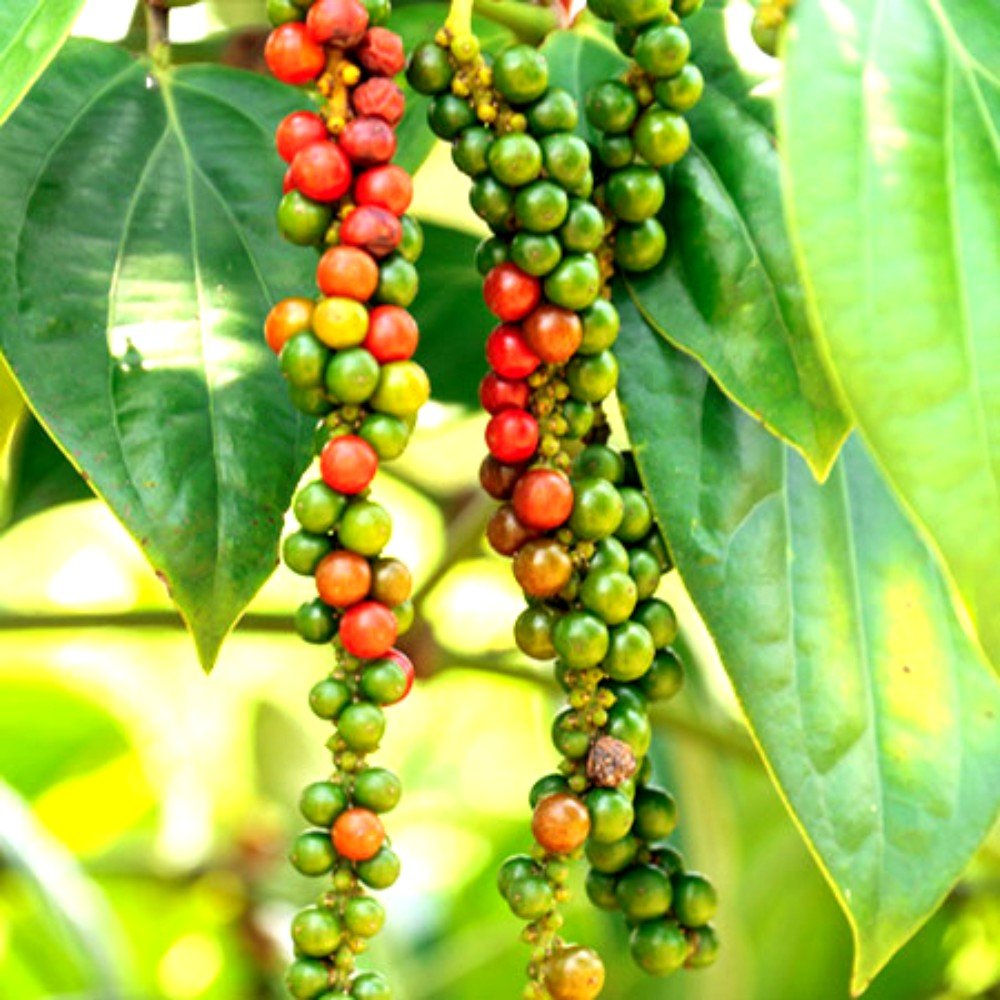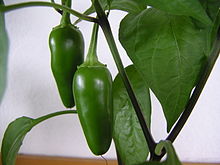Why you should (occasionally) add pepper to your coffee
The other morning as I finished the fried eggs my lovely wife had prepared, I bit into a rather larger-than-usual chunk of black pepper. As you probably know, there are few things that enliven your mouth quite as much. First, there is a sharp bitterness. Next comes the sensation of heat and a deep spiciness which is followed quickly by a numbing of the contacted area. We almost don’t think of it: It’s just, you know, pepper.
But on this morning, with my mouth still zinging, I followed up that bite of pepper with a mouthful of coffee and – WOW! – I knew I was drinking something! The combination of the tingle brought on by the pepper and the heat of the coffee was quite exhilarating. So of course, I got to wondering…
It turns out there are a number of reasons why adding pepper to your coffee is a good idea. It not only adds a new dimension to the taste of your morning cup, but it also has legitimate health benefits.
And really, this should not be a surprise to anyone familiar with the history of coffee. Spices have been a part of coffee culture since the Sufi monks “invented” drinking it in Yemen sometime before the 14th century. The traditional Yemeni spice mix, Hawaij, which is used in coffee and soups, contains many fragrant spices including cumin, turmeric, cardamom, and black pepper. Those of you who like your chai spice lattes know what I’m talking about: there is black pepper in there, too.
What exactly do we mean by pepper?
For starters, “pepper” is a term used in coffee cupping – that’s coffee tasting done by trained professionals in controlled conditions, sort of like wine tasting. Pepper is such a well-known and distinctive flavor that it is its own definition!
The term is defined by the World Coffee Research organization as
“the spicy, pungent, musty, and woody aromatic characteristic of ground black pepper.”
World Coffee Research Sensory Lexicon
Copyright © 2016 World Coffee Research. All rights reserved.
See? They are the experts and even they know its “just, you know, pepper.”

Types of Pepper
In general, for the purposes of this article, “pepper” can be divided into two distinct categories. In one, you have Black Pepper or Piper nigrum. This is the vine shown above that produces the fruit that becomes the pungent “King of Spices” used in cooking and at the table. In the other category, you have the “new world peppers” – the characteristic fruits of the approximately 50,000 pepper plants (Genus Capsicum) native to North and South America. Unfortunately, it only gets more complicated from here.
Piper nigrum – Black Pepper Varieties
The first complication is that Black pepper is the name of both the vine that produces tiny fruits called peppercorns and it is also the name for the spice produced from grinding those black peppercorns. Stick with me here and I will guide you through the weeds.

Black Pepper
Black pepper is produced from the green, unripe fruit of the pepper plant (technically, like the coffee cherry, it is a drupe). They are cooked in hot water and dried, creating what we know as a black peppercorn.
White Pepper
The same plant is the source of White pepper. White pepper is produced from the red, ripe fruits which are soaked in water in order to remove the fruit. The exposed seed is then dried, just like coffee!
Green Pepper
Like black pepper, green pepper, is made from the unripe fruits of the pepper plant. They are dried and then treated in order to retain their green color.
:max_bytes(150000):strip_icc()/Peppers-Sweet-Mix-579bb8773df78c3276657310.jpg)
Capsicum annuum – Bell Pepper Varieties
This is the species of plants that grow the wide variety of peppers that we enjoy in our meals. Bell peppers, Cayenne, jalapeño, chili, etc. We use them as vegetables, but smart people will tell you they are fruits. Technically, though, they are berries. Their spiciness is due to the level of capsaicin they contain. They are native to South America and were brought back to Spain by Christopher Columbus in 1493. So, why are they called peppers? Because the not-at-all-spicy “sweet” pepper was not developed until the 1920s and in the 16th century, if it was spicy, it was called pepper. The name stuck.
Other Hot Peppers
There is nothing wrong with taking the spicy level up a few Scoville units if that’s your vibe. Chilis, habaneros, and even Carolina Reapers, which is actually from a different species, C. chinense, are mostly distinguished by how much capsaicin they contain. Let’s face it, some like it hot!
Health Benefits of Pepper and Peppers
We have shown that although they bring heat and numbness to our mouths, these kinds of pepper are not the same. Their health benefits are also dissimilar.
I wish to make it abundantly clear that I am not a doctor – I am just some smart aleck who likes writing about and drinking coffee. Anything on this website that might appear to be medical advice IS NOT. If you have any questions about your health, I urge you to seek the help of a medical professional.
Tim
Health Benefits of Black Pepper
Like coffee, Black pepper is high in antioxidants, the most potent of which is piperine. Studies have pointed to reduced cell damage in rats fed black pepper vs a control group. Other studies, again in rats, showed reduced inflammation both in joints and airways. The list goes on and on, including positive results for insulin sensitivity, cognitive function, cholesterol levels, and fighting cancer.
From a digestive standpoint, Black pepper is a wonder. The stimulation of the taste buds signals the stomach to increase hydrochloric acid production which in turn helps in the digestion of proteins. It also increases the absorption of other chemicals. For instance, the bioavailability of the curcumin in turmeric is up to 20 times higher with the addition of pepper to the spice! There is also evidence that piperine fights bad bacteria in the small intestine while increasing the good bacteria in your gut.
Piperine also has another property that is near and dear to my heart: it is thermogenic. That means it helps to stimulate our metabolism and break down lipids – those are fats to you and me. That means that you burn more calories and fat!
Health Benefits of Capsicum Peppers
As we have learned, Black pepper and Peppers are two different things. The chemicals that give them heat are different, as well. Capsaicin, which is what gives the kick to bell peppers, is loaded with health benefits. Like piperine, capsaicin has the effect of stimulating our metabolism. It also activates receptors in fat cells, which may prevent obesity, Type 2 diabetes, high blood pressure, and cardiovascular disease, according to research from the University of Wyoming’s School of Pharmacy. Research using Cayenne pepper has also pointed to improved circulation and heart health and has been shown effective against ulcers and prostate cancer.
This study used both caffeine and cayenne pepper together. Participants experienced less calorie intake and more calorie expenditure

Jalapeño
A quick search on da’ Google brings up a plethora of recipes that utilize jalapeños and coffee. From beef rubs to barbecue sauce and bacon to beer! Jalapeno and coconut is also a common specialty coffee available on the internet. Why not give it a try? According to the Wine Spectator, there are even those who like their merlot infused with both coffee and jalapeno! Clearly, the coffee/jalapeño taste combination has its fans.
Conclusion
So, my morning routine has changed. When I was a young college student, I was a full-on caffeine fiend. Throughout my “office years” I would drink coffee virtually non-stop. I had a cup warmer at my desk and as my mug became empty, there was little doubt that I’d be making my way back to the brewer before long. As I have, ahem, matured, and elevated the quality, and let’s be honest, the price, of my coffee, I have cut back on my caffeine intake. But I still miss having that hot cup of something at my side as I type away at the computer. But thanks to the research I have done for this article, I have altered my behavior. To that end, I have started incorporating black pepper, cayenne pepper, turmeric, and ginger into my morning-through-early-afternoon drinks.
My usual mode has been two pour-overs of whatever coffee I am enjoying at the moment. That has transmogrified to a first pour-over, thoroughly enjoyed, followed by putting the aforementioned spices into my mug with a pinch of salt and doing additional pours through the mostly spent grounds of the first pour. In the afternoon, I have another regular cup of coffee and maybe an additional “spice cup.” I keep my caffeine levels reasonable, I keep my costs in line, and maybe… just maybe, I will lose some of this weight that has somehow caught up to me!
I tell you, I am satisfied with the taste.
I’ll keep you apprised!

